
How to grow mushrooms - The Easy and Ultimate Guide
If you want to learn how to grow mushrooms, you have come to the right place. It is really simple.
I will guide you on how to grow mushrooms whether indoors or outdoors.
After this ultimate guide, I am sure you will be able to grow mushrooms either for commercial use as a business or as a hobby for yourself or your family.
You may have seen your parents and other people growing vegetables and plants at their homes, but not mushrooms.
Growing mushrooms is quite simple, it's just like growing vegetables and other fruits.
So, stay with me as I will guide you through many stages of growing mushrooms at your home.
At any stage, if you get confused in the terminology used in this guide you can check it in the glossary which I will put at the end.
Growing Mushrooms At Home Or On Small Farms
Mushrooms can be a good addition to widen the types of crops you grow at home or small farm.
Mushrooms are very flexible and can be grown in different environments and areas.
You don't have to worry about space. You can grow it in a room or used the basement or even grow it alongside other vegetables that you are growing in your garden.
Unlike other crops, they do not require messy soil to grow, so you can grow it indoors.
They require very little space to grow so if you are living in a small apartment.
The Growing Life Cycle of Mushroom
Before starting on how to grow mushrooms, I think it is important to know that what is the growing life cycle of a mushroom. Because you will need this knowledge to grow your mushrooms at home or on the form.
The mushroom life cycle is well known to cultivators. However, it might not be known to most mushroom hunters. Mushroom cultivators follow the mushroom life cycle. Mushrooms produce fruitbodies when their life cycle completes. For most species, it appears in a few days, then disappears.
The mushroom life cycle usually goes through the following steps (which you should never be worried about if you don't understand).
- Inoculation: In this stage Spores put upon a growth medium (a substrate)
- Spore Germination: Fine fungal filaments grow from the Spores. It is known as Hyphae.
- Mycelial Expansion: Developing mycelium absorbs nutrients from organic matter and expands at an exponential rate.
- Hyphal Knot: Mycelium condenses into hyphal knots, then develop into "primordia", also known as baby mushrooms.
- Primordia Formation: The mushroom organism produces an amazing array of enzymes and optimizes the constituents of the new fruit-body and the mycelium both. Host Defense harvests during this peak stage to get max advantages.
- Fruitbody Selection: The growing organism selects the most promising few out of thousands of Primordia to develop into mature fruitbodies.
- Mature Fruitbody: The organism directs all of its energy and nutrients to develop the fruitbody.
- Spore Release: In this stage, the mature fruitbody releases spores. If it lands on a favorable growing medium (substrate) can germinate, which restarts the mushroom life cycle!
A mushroom includes a much larger network of substances than the mushroom that appears on the surface, called Mycelium.
Mycelium is a network of cells that resembles like a plant root system. Actually, Mycelium is the plant and mushroom is the fruit.
Mycelium grows mushroom to produce spores and reproduce and assures its species going.
Mushrooms In The Wild
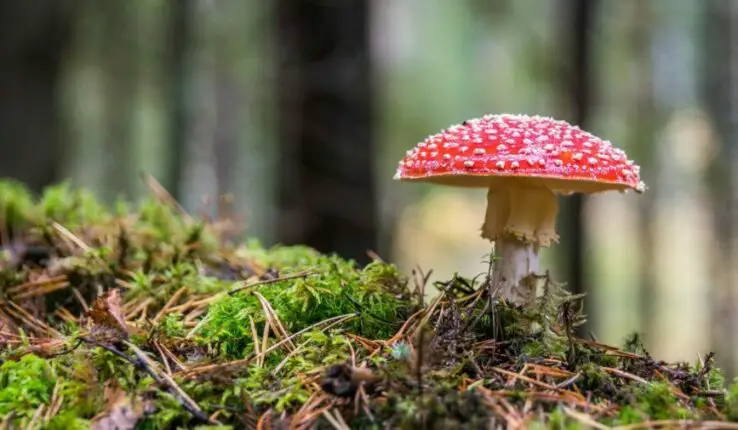
The mushroom life cycle in the wild both ends and begins at the same time. Because when a mushroom matures it drops spores, which then mix with other spores on the ground and start making mycelium again.
Think of spores as seeds for a plant, but they are fungi.
When mycelium grows, it starts making small bumps, called pinheads, which then becomes the mushroom.
The largest organism in the world is believed to be a mycelium mat that covered a 2,400 acre (970 hectare) area in eastern Oregon state.
Before it became a full mushroom, it will go through a stage called primordia which is more like a baby mushroom.
Then these primordia (baby mushroom) will grow to a full-sized mushroom which then matures and drops its spores and the whole cycle begins again.
Cultivated Mushrooms
You will use the same growing life cycle for mushrooms as in the wild when growing it commercially. But with some main changes to maximize the growing process.
Stage 1: Mushroom Spawn Or Spores
In the first stage, get mushroom spawn or spores.
You may know what are spores but what is spawn?
Spawn is like a boom for mushrooms because it already has mycelium growing on it, that's why it can be used for speeding up the growing process.
With these two substances Spawn or Spores, you will make a substrate for mushrooms.
A substrate is nothing but a medium or a substance for mushrooms on which mycelium can grow on.
For mycelium, the mushrooms are like "fruit bodies".
Different mushrooms require different substrate to grow on. Like Oyster Mushroom which has some aggressive type of nature. It usually grows even on Coffee ground. While others require wood to absorb nutrients from.
Stage 2: Inoculation Of The Substrate
The second stage is the Inoculation stage.
In this step, you will introduce the spores or spawn to your substrate or growing medium.
Although this is unnecessary, we do it under sterile conditions to curb other unwanted species like mold or fungi from growing alongside.
Contamination is very important for mushrooms growing.
Stage 3: The Incubation Stage
After the Inoculation of the substrate put this substrate in a warm and dark place. It should be there for about a few weeks to a few months depending on the mushroom type and environment. This stage is called the Incubation stage.
Put the substrate into bags and then store them.
During this process, the substrate completely colonizes and you will get a mat of solid white mycelium on the outside of the substrate (growing medium).
Stage 4: Fruiting Phase
The next phase is putting your substrate into a fruiting condition.
In this stage, cut the bags from the side to expose them to fresh air. After exposing it to fresh air you will have to mist it with water to keep it moist the whole day.
After a few days, primordia (pinheads) will start showing on the substrate.
Stage 5: The Harvesting Phase
The harvesting time depends on species.
When these pinheads or primordia become mature or grown-up, you can then harvest them by twisting or gently pulling caps grown on the substrate.
Many species of mushroom can be harvested and grown many times, every wave of new mushroom is referred to as a flush.
But once a substrate is drained out of its energy, it will stop producing further mushrooms.
As you use your mycelium again and again to inoculate more batches of the substrate, it will become senescence.
Senescence is a process of deterioration, it's like all living things become old with age and this is like old age for mushrooms.
When mycelium is used many times, it becomes old and weak and stops producing further fruitbodies. At this stage, get new spawn or new spores to grow mushrooms again.
Some Popular Types of Mushrooms to Grow
There are so many different types of mushrooms that you can grow.
The main benefit of growing your mushrooms at home or on a form is that you won't be growing a poisonous one, as long as you are getting your spawn from a trustworthy source. Because in the wild, you may not be able to distinguish between healthy and poisonous mushrooms.
There is an old saying that there are old mushroom hunters and brave mushroom hunters. But there are no old brave mushrooms hunters. (this is for hunting mushrooms in wild)
Let's look at some popular types of mushrooms you can grow easily.
1: Oyster Mushrooms
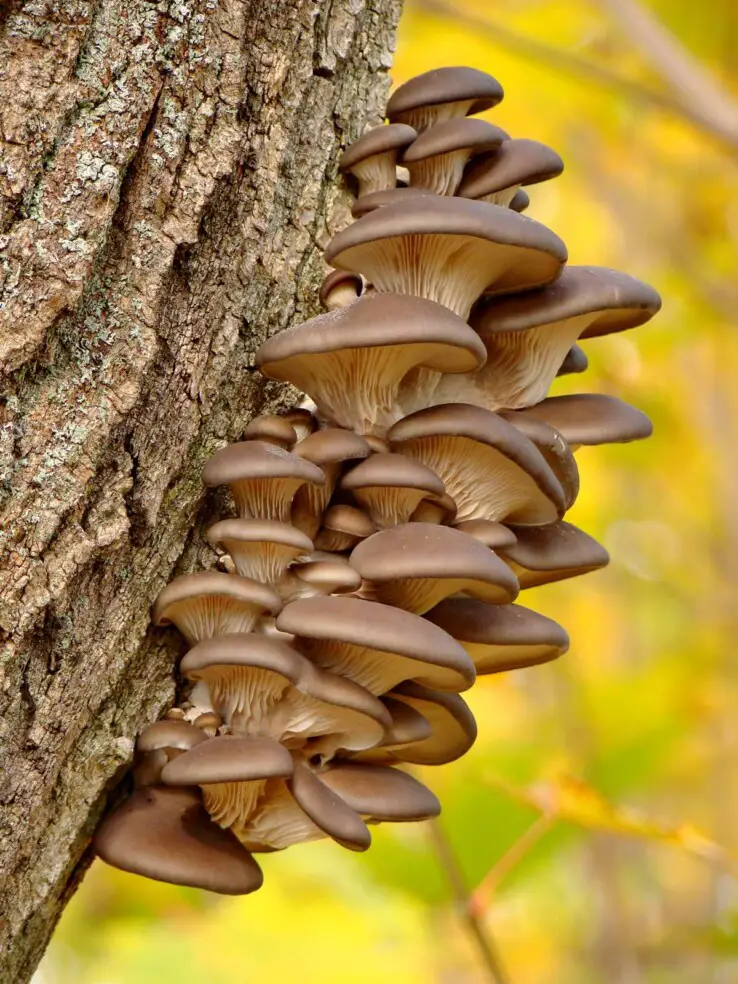
Oyster mushrooms are one of the most popular mushrooms in the world, especially in Asian countries.
They are loved by beginners and pros alike.
They differ from others which you may not have seen before.
These mushrooms grow on the side of trees in the wild and have a large flat cap with small or no stem.
Take a look at the Growing Oyster Mushrooms at Home - Step by Step Guide.
2: Button Or Crimini Or Portobello Mushrooms
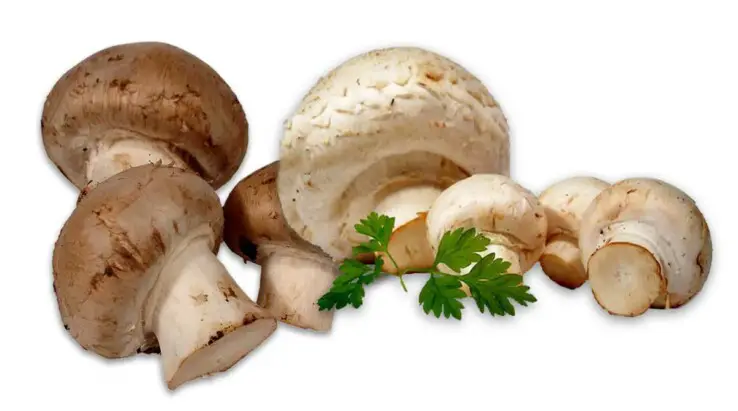
These mushrooms are common in nature which you may have eaten one in your life.
These mushrooms are all the same species, but only the allowed time of growth before being harvested makes them different.
As they appear for the first time from mycelium, they look like a button, hence named Button Mushroom.
As they grow and get bigger they became brown and categorized as Crimini Mushroom. They are sometimes called "Baby Bella".
Finally, when a crimini mushroom grows fully, it becomes Portobello Mushroom. These mushrooms are brown and have a tougher and meaty texture.
3: Shiitake Mushrooms
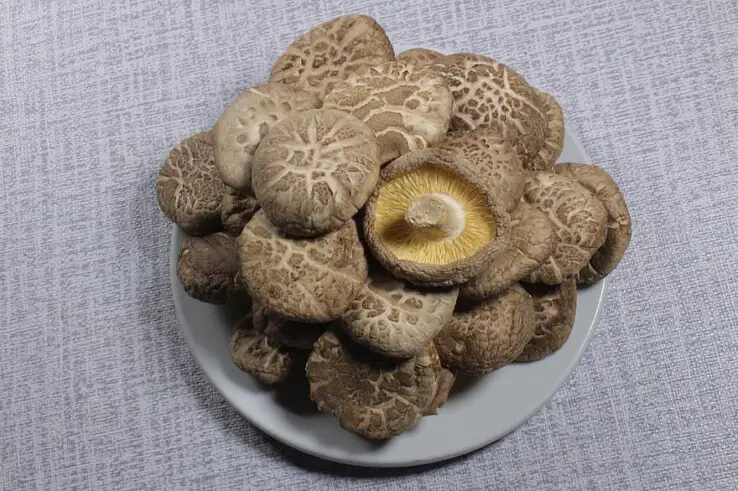
These mushrooms have a texture the same as portobellos and have an earthy and smoky flavor and often grown outdoors on logs.
Despite being delicious, Shiitake Mushrooms provide several health benefits, for example, they help in lowering cholesterol levels.
They are sold in the dried condition in stores but eating them fresh is a real treat.
Please check back in a few days as I gonna write a comprehensive guide about Growing Shiitake Mushrooms.
4: Enoki Mushrooms
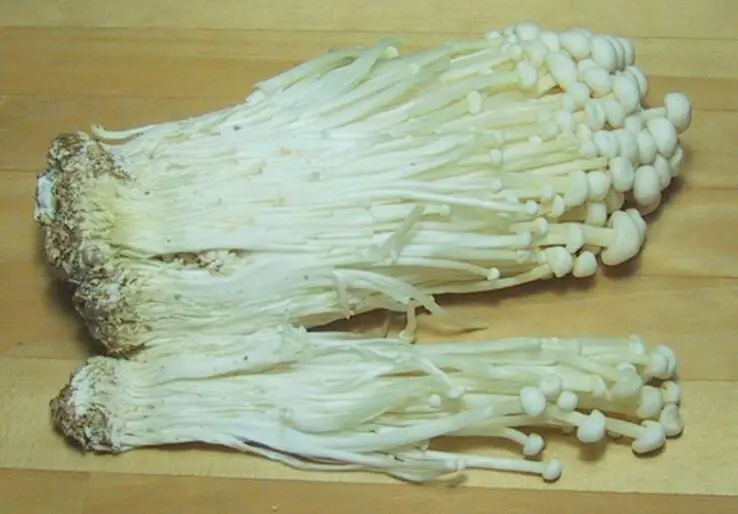
Enoki Mushrooms grows tight together in a group, they have long stems with tiny caps.
If the caps were absent, they would look like spaghetti.
Because of their tiny size, it can be grown in jars. They require very little space.
5: Maitake Mushrooms

These mushrooms are rich with nutrition and health benefits along with being delicious.
These mushrooms appear to be ruffled feathers of a hen, that's why they are named as "hen of the woods" but this doesn't apply for their taste.
Maitake has a strong earthy flavor, I'd suggest you try it once before growing.
Let's Get Started On How To Grow Mushrooms
Each type of mushroom requires a different ground to be grown in. Like, Shiitake can be grown on wood or sawdust while we can grow Button and Portobellos on composted manure.
Similarly, Oyster Mushroom can be grown on varieties of different grounds like you can grow it on straw or coffee grounds.
How To Grow Mushrooms Indoors
Growing mushrooms indoors is a very easy and convenient way to grow your food quickly.
You can grow mushrooms indoors in many ways, Let's have a look at them.
The Quick Way Using Mushroom Kits
If you are growing mushrooms for the first time, I suggest you should buy a mushroom growing kit.
Because it is easy with the mushroom kit to grow your mushroom easily and quickly.
The Kit comes with ready-made substrate inoculated and incubated, so you won't have to make your substrate to start your work.
You will have to just open the box, make a cut in the bag, moist or spray the substrate every day. In about a week, you will see little mushrooms growing on the substrate. After two weeks or maybe more days they will be ready to harvest. Hurray, enjoy.
It is a good way to start with a mushroom kit you will get to know how a mushroom life cycle works.
It allows you to skip the difficult parts of preparing and all other hurdles while making the substrate for mushroom. It also provide a foolproof way to have your success in growing your first mushroom.
Get your mushrooms growing kit.
Growing Oyster Mushrooms At Home
If you are planning on growing oyster mushrooms at home, I would recommend you should check our guide for "how to grow oyster mushrooms" at home.
It has all the information on how to grow oyster mushroom, Like
- Choosing a substrate to grow on
- Supplies you need
- Making of the substrate
- Fruiting and harvesting oyster mushrooms
Growing Button Mushrooms
These are very common and easy to grow mushrooms. And you probably have eaten it several times.
Button Mushrooms generally grow in seed flats like trays.
Trays can be in any dimension like 10" x 20" or 14" x 16" but it is important to use trays that are 6 inches deep.
Start by getting composted manure, inoculate it with button mushroom spawn, and fill the trays with this substrate.
Keep the soil temperature around 70° F (21° C) by putting it on a heating pad for about 3 weeks, or until mycelium appears. You will notice threadlike roots spreading across the soil.
After mycelium appears, you will have to cover it with potting soil for about an inch and drop the temperature of the heating pad to 55-60 F° (12-16 C°).
Now keep the soil moisten by spraying on it or cover it with a damp cloth and spray the cloth so it doesn't dry out.
After 3-4 weeks button mushrooms should be ready. Harvest them by cutting at the base with a sharp knife.
Avoid pulling button mushrooms from the soil as it will damage other mushrooms that are still growing.
Once they grow you can harvest them every day for about 6 months.
Growing Mushrooms Outdoors
Growing mushrooms indoors is perfectly safe, but for some reason, if you decided not to grow it indoors, you can grow it outdoors. Just a little bit of extra care will be needed.
So let's discuss what ways we have got to grow mushrooms outdoors.
Growing Mushrooms On Logs
Many types of mushrooms grow on trees and will grow on hardwood logs.
Shiitake mushrooms are very common for growing on logs.
If you are interested in learning more about growing mushrooms on logs, please check back in a few days, as I am writing an ultimate guide for growing mushrooms on logs.
In this article, you will learn about the following.
- Why would you want to grow mushrooms on logs?
- What varieties flourish on logs.
- Kinds of logs to inoculate and inoculation process.
- How long does it take to grow, and where to store logs plus how and when to harvest them.
Growing Outdoor In Mushroom Beds
Pick a shady place like under a tree so it doesn't get direct sunlight as most of them prefer shade.
Most mushroom won't grow on just garden soil, so you will have to make a substrate mostly a mix of straw, compost, or fresh wood chips.
Decide the type of mushrooms based on the substrate or growing medium you can get.
A mushroom bed can be of any style, either grow them in a simple garden bed or make a raised bed with timber as you might do for vegetable's bed.
You should make your bed from inoculated logs. It will not only give your mushroom bed a neat homely look, but it is also an efficient use of space and resources.
Mushroom beds aren't that much deep as vegetable ones, mostly they are about 6 inches deep, or read the instructions of your spawn to know how deep should it be mixed.
Keep your bed smaller around 4 feet wide. It will be easier to harvest.
You should know the temperature of the spawn which is needed to grow and spread. Read the instruction of your spawn carefully. So you know when is the perfect time to put your spawn into your substrate, and not waste your investment.
As a beginner, I would recommend Wine caps mushroom to grow. They have a distinctive appearance because of their red caps and won't mix with other growing species around.
You should also grow shaggy ink caps and blewits alongside, with an addition of shiitake or reishi mushrooms around your mushroom bed. This will make it a lot fun.
You should grow them in spring as it is an ideal time, but protect them from direct sunlight.
You should not grow button mushrooms in your bed for now as some poisonous species also look like button mushrooms which might confuse you.
I would suggest sticking with a more distinctive type of mushrooms in outdoors as to not mix them with other poisonous or harmful mushrooms that you are not aware of.
Growing Mushrooms Alongside Vegetables
We can grow mushrooms alongside vegetables with no problem at all.
Please be careful not to disturb the mycelium in the ground, use a no-till gardening method to ensure.
If you compost your crops at the end of the season, then you need not do any extra thing to prepare your garden for mushroom as plants and mushrooms can be grown together with no problem.
In fact, many plants need a fungus named mycorrhizal to grow, which grows in their root system.
Adding fungi to your garden creates a living ecosystem.
The fungi break down organic matters in the soil thus creating a living ecosystem loved by plants, worms, vegetables, and fungi itself.
How Much Time Is Required For Growing Mushrooms?
It depends. If you are using a mushrooms kit then growing edible mushrooms will only take a couple of minutes to keep the soil moist.
You can make mushroom growing a full-time job or side business if you got an extra 10 hours a week.
How Much You Can Earn By Growing Mushrooms?
It depends on the area you live in. For example, in Greenland, you can get $50/Kg. In the US you can sell both Shiitake and Oyster mushrooms for $10 or more and for wholesale it can fetch $6/pound.
In 100 square feet, you can harvest for a total of 2,400 pounds of mushrooms per year.
So you can get about $14,000 per year at a wholesale rate or if you sell directly to the farmer's market or restaurants, you can get even more.
How to Grow Mushrooms at home -The Ultimate Guide - Videos
Grow mushrooms short video
Easily grow mushrooms longer video
Glossary
Have a look at some difficult terms related to mushrooms used in the article.
Spore: A spore is like a seed of a plant, but it finer like black powder.
Mycelium: It's a network of the vegetative part of fungi. In this network, chemicals and nutrients are exchanged. If you look under a fallen log or stick, that has been there for some time, you will see a network of mycelium.
Substrate: It's a growing medium on which mushrooms grow. Hardwood logs, straw, wood chips, cardboard, coffee grounds are some common substrates, some people also use spent brewery grains as a substrate for mushrooms.
Inoculation: The stage in which we introduce spores or spawn to the substrate or growing medium.
Spawn: A pre-inoculated growing medium with a much-established amount of mycelium. You can mix it with the substrate to grow a larger amount of mushrooms.
Incubation: After the inoculation stage, the substrate or growing medium is stored somewhere in ideal conditions to incubate. During this stage mycelium spreads throughout the substrate, breaking down organic matters of the substrate and absorbing its nutrients. This process is called colonization.
Primordia: These are the baby mushrooms formed on the surface of the colonized substrate.
Fruit body: The mushroom we see is the fruit body.
Flush: It is a crop of mushrooms. Most mushrooms produce several flushes before the substrate gets old and used as spawn for the inoculation of new substrates.

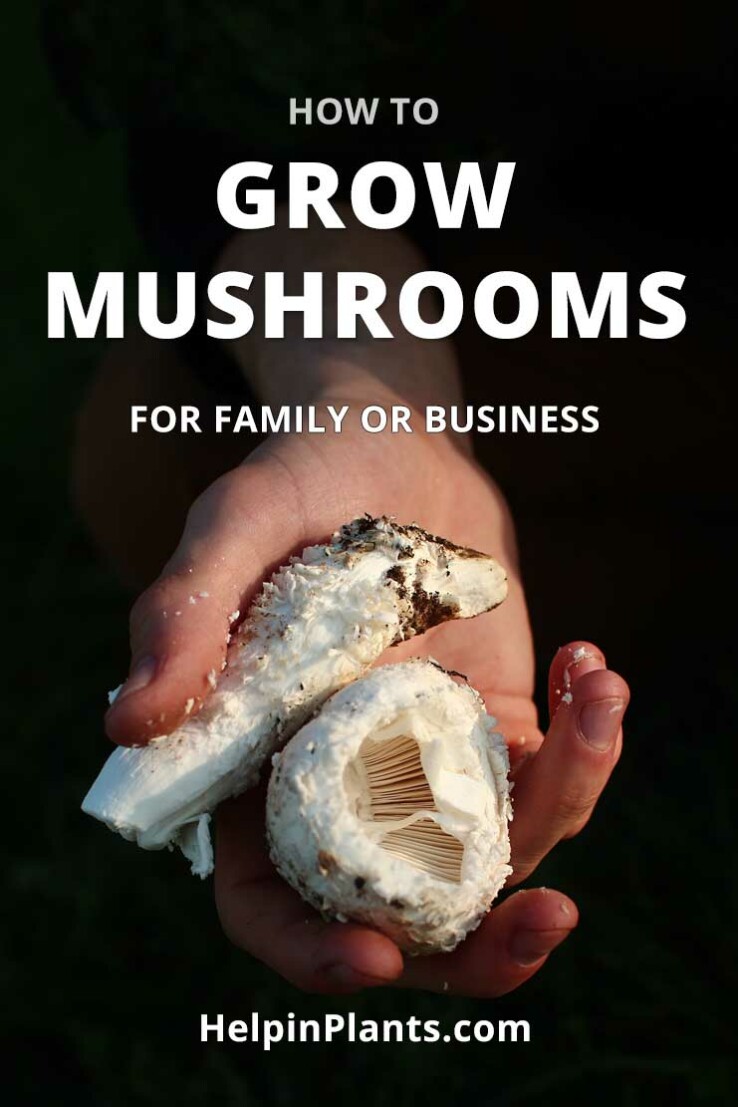
[…] You might also be interested in How to Grow Mushrooms - The Easy and Ultimate Guide. […]